Banana is one of the oldest fruits known to mankind and it is the fruit of a plant of the genus Musa (family Musaceae). If you want to make a big profit from a small piece of land, you should consider cultivating Bananas. Banana production depends on many factors such as variety, plant density, management methods, etc. Let’s take a look at the top 20 steps to boost your Banana fruit yield below.
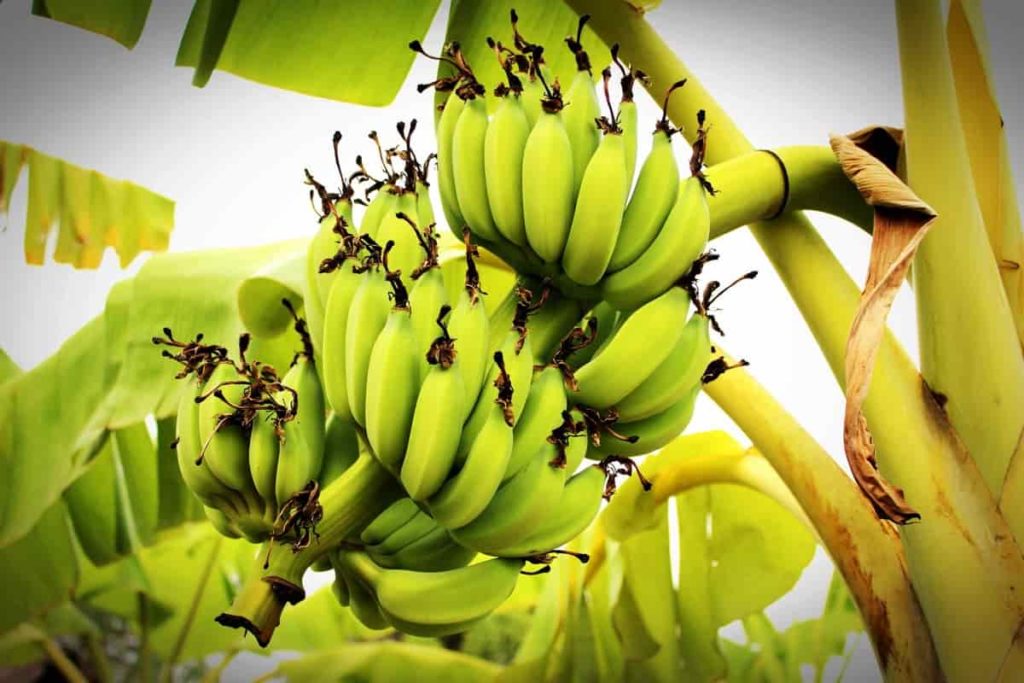
Top 20 Steps to Boost Your Banana Fruit Yield
Step 1: Variety selection effect on Banana growth
Famous varieties of Banana to grow in India are:
- Rasthali
- Nendran
- Karpooravalli
- Dwarf Cavendish
- Poovan
- Co.1
- Neypoovan
- Sannachenkadali
- Matti
- Udayam
- Robusta
- Grand Naine
If you are planning for an export market, you can consider growing Cavendish variety. Grand Naine Banana variety is gaining popularity to become the most preferred variety due to its ability to withstand biological stress and good quality bunches. The hands of the bunches are well placed at a distance that has a straight direction of the figure, which is larger. The fruit produces an attractive uniform yellow color with better shelf-life and quality than other crops. Bananas come in many varieties, so the choice of varieties should be based on their yield and production.
Step 2: Soil preparation for encouraging Banana flowering
Use soil that is well-drained, rich, and well-nourished to feed your plant. It is important to provide at least 12 hours of sunlight to encourage growth, flowers, and fruit. Water your Banana plant regularly, thoroughly and deeply, to keep the soil moist. Bananas can grow from the poorest to the richest type of soil with different successes.
In case you miss this: Dwarf Banana Farming -Plantation In India
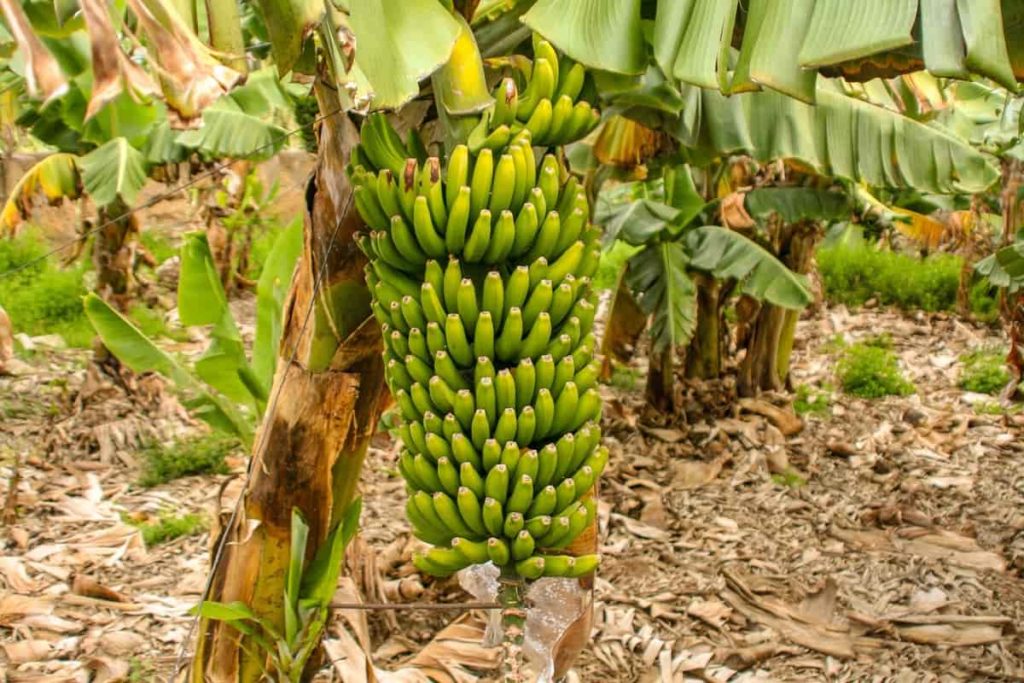
Avoid low-lying soil, very sandy, and heavy black cotton with poor drainage. Soils that are high in acid and not too alkaline, rich in organic matter with high nitrogen, adequate levels of phosphorus, and abundant potash are good for Bananas.
Step 3: Best climate for fruit production
Bananas need a warm, humid, and rainy climate as a tropical crop. The maximum temperature range is 10 to 40°C and the relative humidity is 90% or higher. It is very sensitive to cold and cannot tolerate dry conditions. Strong dry winds cause a significant decline in plant growth and fruit production and quality.
Step 4: Bunch weight and quality
At a spacing of 1.8 x 1.8 meters, place two plants per hole to double the yield with little or no effect on the size and maturity of the bunch on the crop in Dwarf Cavendish. Double planting of Robusta Bananas also increased profits. Calcium is needed to ensure root, leaf, and sucking growth, thus providing high yields.
Step 5: Propagation
Commercial edible Bananas do not produce viable seeds. Therefore, Bananas are usually spread by suckers and sword suckers with narrow leaves. Rhizomes can be successfully used as preaching material in whole or in pieces of fruit and non-fruit plants with at least one sound bud.
In case you miss this: G9 Tissue Culture Banana Cultivation, Farming Practices
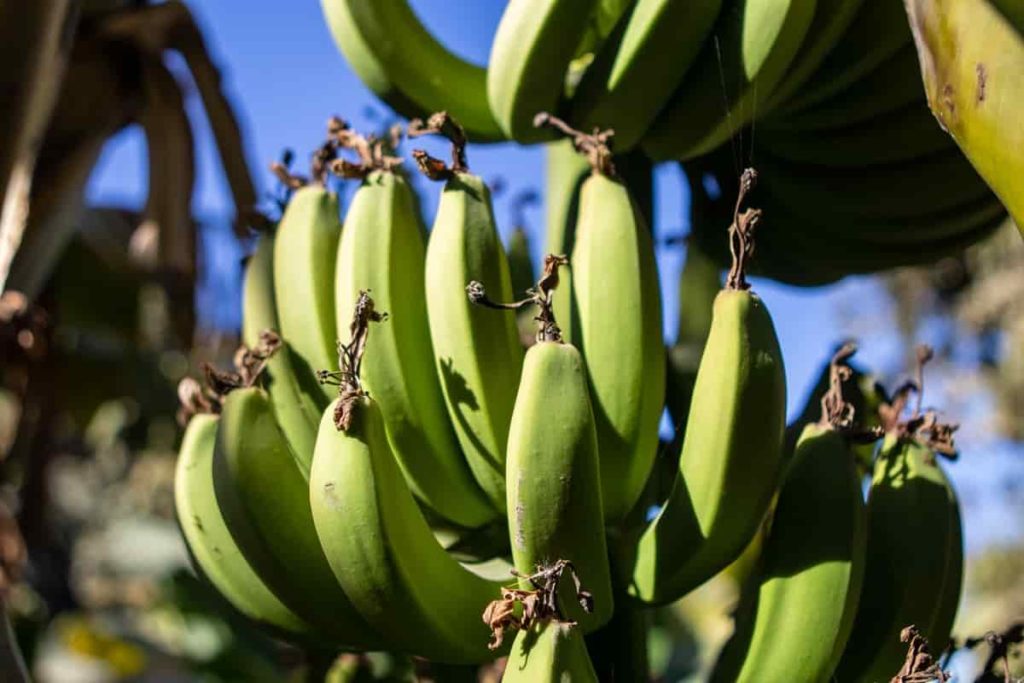
Step 6: Tips for Banana tree grow fast
Usually growing banana outdoors is easy and faster as more space is available when compared to indoor conditions. The right amount of fertilizers along with frequent irrigation help banana plants grow faster. You can plant banana trees in groups in the soils having a pH value of around 5.5.
Step 7: Crop nutrition effect on Banana yield
Nitrogen and potassium are key elements in leaf growth, pseudostem and sucking growth, flower maximization, Banana fruit set and fill as well as production capacity. However, excessive use of nitrogen can weaken the pseudostem, increasing the risk of storm damage and bunch drop. Too much potassium can lead to calcium and magnesium deficiency and can reduce Banana production.
Potassium has a major effect on Banana production, which is in demand around flowers. Phosphorus is important for skin growth and root formation as well as for flower and Banana fruit sets. Calcium is needed to ensure root, leaf, and sucking growth, thus yielding high yields. Its effects are most important in ensuring high-quality fruit with long-term storage capacity.
Nutritional sprays to increase fruit quantity – Immediately after flower stalk emergence, spraying a mixture of 2% urea and potassium dihydrogen phosphate helps to increase the number of bunches and fruits. Is Epsom Salt Good for Banana Trees? Epsom salts are very beneficial for healthy Banana plant growth. It helps in the production of green, abundant leaves and abundant fruits.
Step 8: Planting
Bananas are grown in two ways. The method of the pit and the method of the furrow. Planting is done from February to May while in northern India it is done during July-August. This can be done at any time of the year except summer in South India. About 70% of farmers are using suckers as planting material while the remaining 30% of farmers are using tissue culture seeds. Sword suckers with well-developed rhizome, conical or spherical shape that actively develop conical buds and weigh about 450-700 grams are commonly used as propaganda material.
Suckers can usually be infected by certain pathogens and nematodes. Similarly, due to differences in age and size of the sucker, the crop is not uniform, harvesting is long and management is difficult. Therefore, in vitro clonal propagation is recommended. They are healthy, disease-free, uniform in growth, and quick to produce. Advantages of Tissue Culture planting material
- Plants are free from pests and diseases.
- Uniform growth, increase in production.
- Early maturity of the crop – In a low-land country like India, maximum land use is possible.
- It is possible to plant all year round as the plants are available all year round.
In case you miss this: Red Banana Farming, Cultivation, Planting Methods
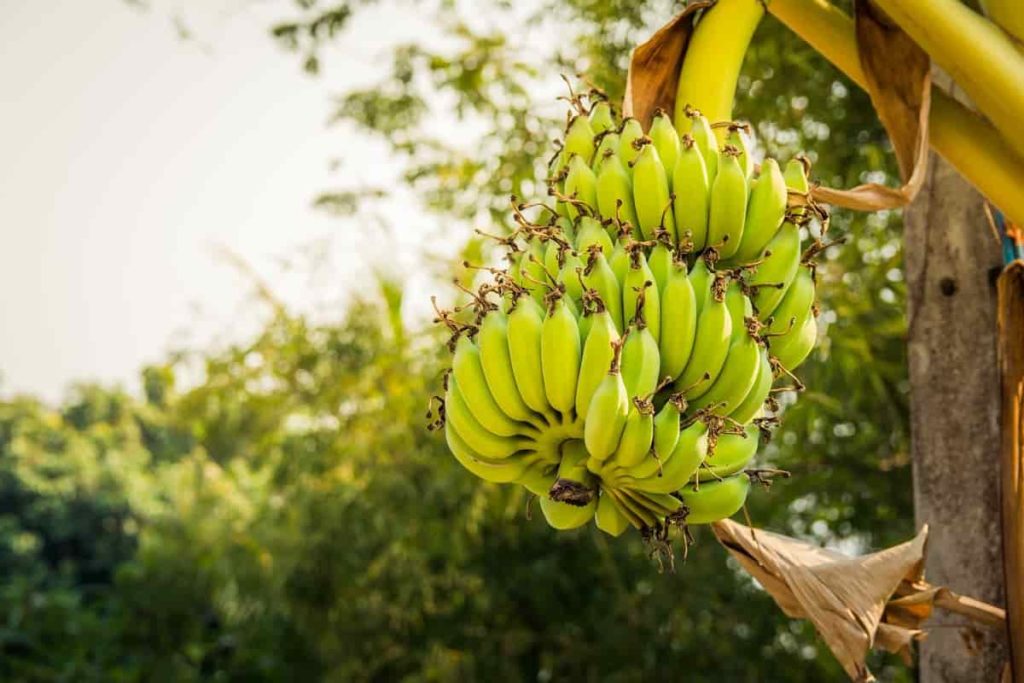
Step 9: Influencing Banana yield
Most Banana production is obtained on freely drained lands where water is not restricted. Soil preparation before planting, and maximum pH maintenance, ensure the farmer has good roots and nutrients are readily available. Trash return will serve as a mulch as well as a valuable source of nutrients. To ensure the best use of environmental conditions for the crops, it is very important to cultivate and choose the spacing to meet the place and climate to get maximum yield of bananas.
Controlling salinity in the root environment and managing water supply will maximize Banana growth, ensuring good nutrition availability. Fertilizer nutrition is also important if you want to get high yields of Bananas.
Step 10: Increase the size of Banana fruit
To produce the most fruit, fertilize the plants frequently four to six times during the season. Apply 1/2-pound 3-1-6 fertilizer every two months. When the Bananas begin to bear fruit, add 4 to 6 pounds of fertilizer. This increase in fertilizer increases the size of the fruit. For increasing the number and weight of Banana fruit, magnesium and sulfur have a direct effect on yield. Poor availability of any micronutrients will also limit plant growth – especially in leafy areas – and reduce the weight and yield of Banana bunches.
Step 11: Banana flowers fall off
Flowers keep coming after the first opening, but they are usually sterile. This collection of sterile female flowers falls off the tree because they do not have the necessary parts to produce fruit even after pollination.
Step 12: High-density planting
Planting high-density plants in Banana helps in achieving higher yields. In addition to high-density planting, cowpea intercrop, timely irrigation, and fertilization can dramatically increase the production of Robusta Bananas without adversely affecting finger size and shape. The HDP system requires fertilizers of different planting densities with three and four soccer per pit at intervals of 1.8 x 3.6 m. The NPK had three levels. 50, 75, and 100% of the recommended doses.
Step 13: Bunch covering
Covering the bunches with gunny cloth or polythene protects the fruit from the sun, hot wind, and dust. To achieve an attractive color, the Cavendish group and the Nendran Banana are practiced covering the bunches. When perforated / polythene bags are used to cover the bunch, the yield increases by 15-20%. The peduncle of the bunch can be covered with a flag to prevent significant rot of the stalk. Covering the bunch increases the weight and quality of the fruit. Covering a bunch of Bananas raises the temperature, which helps in early maturation.
Step 14: Denavelling promotes fruit growth
Removal of the male bud after completion of the female phase is called denavelling. It monitors the movement of photosynthesis in unwanted sinks and promotes fruit growth.
In case you miss this: Organic Banana Farming, Cultivation Practices
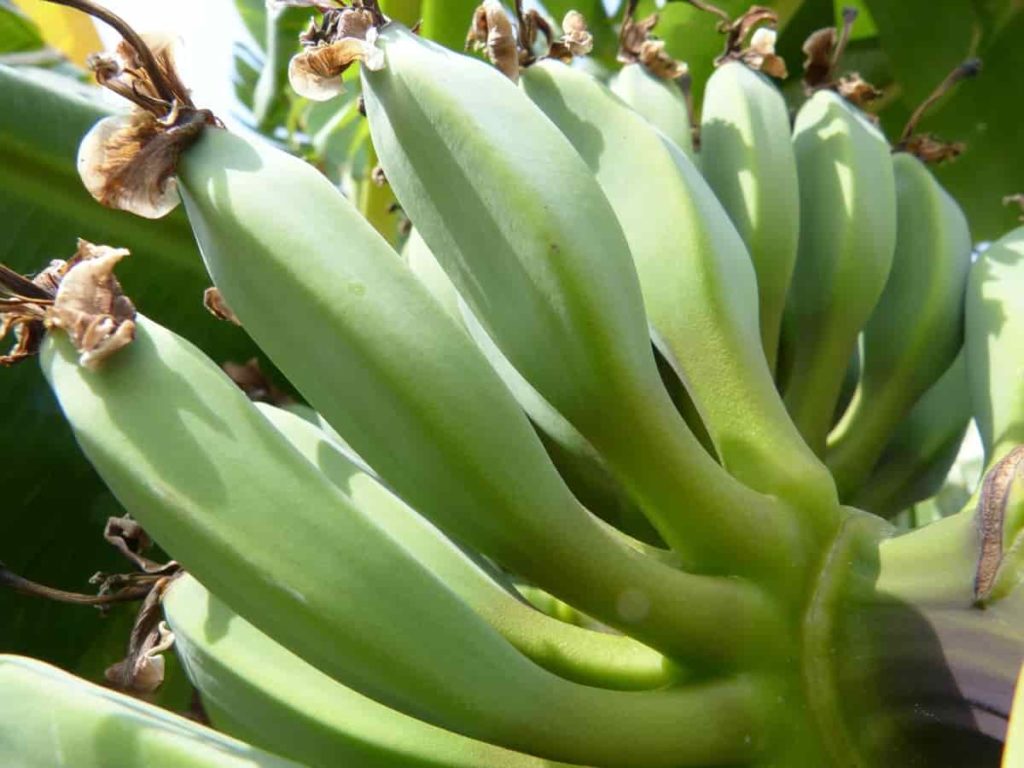
Step 15: Water Management
The banana plant is a water-loving plant. For maximum productivity, it requires a large amount of water. But Banana roots have poor water retention. Therefore, in Indian conditions, Banana production should be supported by an efficient irrigation system like drip irrigation. Banana water requirement is set at 2000 mm per year. The use of drip irrigation and mulching technology has reportedly improved water use efficiency.
Water is saved by 56% and drip production is increased by 23-32%. Irrigate immediately after planting. Apply enough water and maintain the potential of the field. Excessive irrigation will cause congestion of roots due to air leakage from soil holes, which will affect the formation and growth of plants.
Step 16: Pruning of leaves
Infected leaves and old leaves should be pruned regularly. This will reduce the risk of leaf diseases and more. In addition, it provides natural mulch to Banana plants. Leaf pruning is permanent in some species and therefore stays in clusters till maturity. They can be easily removed with a light brush movement a few days after flowering and if it is delayed, it becomes difficult to remove and later they turn brown and shriveled.
This operation specifically eliminates infection by saprophyte fungus to prevent fingertip disease. Although Banana trees do not need much pruning, pruning old, dead leaves helps accelerate growth. Removing leaves that rub against a bunch of Bananas helps in fruit production. As the Banana trees grow taller, be prepared to climb in your effort to prune the tops.
Step 17: Fertigation increase Banana yield by 25-30%
The banana tree requires large amounts of nutrients, which are often supplied only through the soil. The nutritional requirement is 20 kg FYM, 200 g N; 60-70 grams P; 300 grams K / plant. Bananas require heavy nutrition. The banana crop requires 7-8 Kg N, 0.7-1.5 Kg P, and 17-20 Kg K per MT yield. Banana responds well to nutrient intake. Traditionally farmers use more urea and less phosphorus and potash.
To avoid loss of nutrients from conventional fertilizers, i.e., leaching, evaporation, and loss of P and K by fixation in the soil, water-soluble or liquid fertilizers by drip irrigation are encouraged. Yield using fertigation is seen to increase by 25-30%. In addition, it saves labor and time and distributes nutrients evenly.
Step 18: Intercrop
Intercropping can be profitable. Short-term crops (45-60 days) can be planted between rows of plants. This is only possible in the early stages of planting.
Step 19: Protect crops from pests and diseases
Bananas are prone to viral diseases, fungal diseases, and pests so it is reduced. Production, quality, and production. The use of disease-free planting materials and resistant cultivar is recommended. Banana insects can cause significant damage to fruits (e.g., thrips, moths/caterpillars, scales), leaves (e.g., mites, moths/caterpillars), and pseudostems (e.g., weevils), and can transmit important plant pathogens (for example, aphids transmit the Banana bunchy top virus).
In case you miss this: Curry Banana Cultivation Income (Raw Banana), and Yield
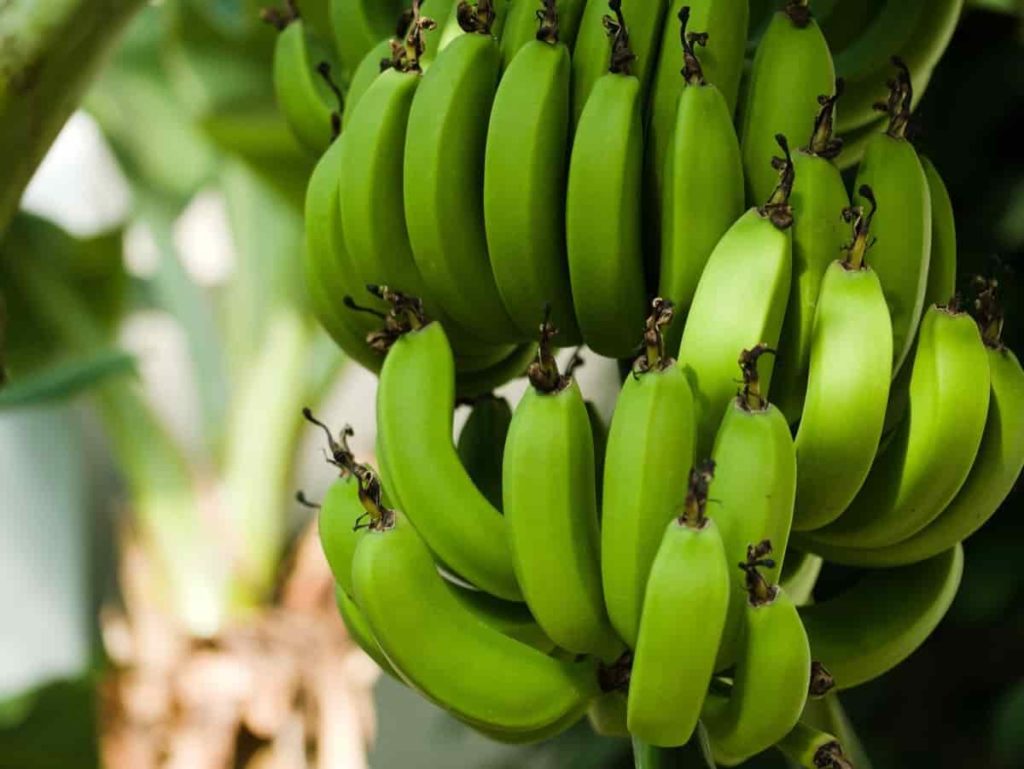
Although Bananas are susceptible to pests such as ants and giant whiteflies, Bananas can be difficult to grow. Sometimes, you can wash them with a regular stream of water. Other alternative long-term solutions include introducing predators or applying insecticide soap or oil to trees that eat these insects. Use organic pesticides to repel pests and diseases in Banana plants. Plant disease-resistant plants. If your Banana trees are affected, plant new trees in another area as the spores can stay in the soil for years.
Step 20: Harvesting time is also important to get more yield
Bananas can be harvested when the fruit is slightly or fully ripe, depending on market preferences. Harvesting is done at 75-80% maturity for long-distance transportation. The fruit is climacteric and can reach the stage of consumption after ripening operation. The main Banana harvesting season is from September to April and the planted crop is ready for harvesting within 12-15 months of planting. 90-150 days after flowering, the bunches attain maturity depending on the variety, soil, climatic conditions, and altitude.
- Economical Aquaculture: A Guide to Low-Budget Fish Farming
- 15 Common Planting Errors That Can Doom Your Fruit Trees
- How to Make Houseplants Bushy: Effective Tips and Ideas
- Innovative Strategies for Boosting Coconut Pollination and Yield
- Pollination Strategies for Maximum Pumpkin Yield
- The Complete Guide to Chicken Fattening: Strategies for Maximum Growth
- Natural Solutions for Tulip Problems: 100% Effective Remedies for Leaf and Bulb-Related Issues
- Revolutionizing Citrus Preservation: Towards a Healthier, Greener Future
- Natural Solutions for Peony Leaf and Flower Problems: 100% Effective Remedies
- Maximizing Profits with Avocado Contract Farming in India: A Comprehensive Guide
- Natural Solutions for Hydrangea Problems: 100% Effective Remedies for Leaf and Flowers
- The Ultimate Guide to Choosing the Perfect Foliage Friend: Bringing Life Indoors
- From Sunlight to Sustainability: 15 Ways to Use Solar Technology in Agriculture
- The Ultimate Guide to Dong Tao Chicken: Exploring from History to Raising
- The Eco-Friendly Makeover: How to Convert Your Unused Swimming Pool into a Fish Pond
- Mastering the Art of Delaware Chicken Farming: Essentials for Healthy Backyard Flocks
- 20 Best Homemade Fertilizers for Money Plant: DIY Recipes and Application Methods
- How to Craft a Comprehensive Free-Range Chicken Farming Business Plan
- Brighten Your Flock: Raising Easter Egger Chickens for Beauty and Bounty
- How to Optimize Your Poultry Egg Farm Business Plan with These Strategies
- Subsidy for Spirulina Cultivation: How Indian Government Schemes Encouraging Spirulina Farmers
- Ultimate Guide to Raising Dominique Chickens: Breeding, Feeding, Egg-Production, and Care
- Mastering the Art of Raising Jersey Giant Chickens: Care, Feeding, and More
- Ultimate Guide to Raising Legbar Chickens: Breeding, Farming Practices, Diet, Egg-Production
- How to Raise Welsummer Chickens: A Comprehensive Guide for Beginners
- How to Protect Indoor Plants in Winter: A Comprehensive Guide
- Ultimate Guide to Grow Bag Gardening: Tips, Tricks, and Planting Ideas for Urban Gardeners
- Guide to Lotus Cultivation: How to Propagate, Plant, Grow, Care, Cost, and Profit
- Agriculture Drone Subsidy Scheme: Government Kisan Subsidy, License, and How to Apply Online
- Ultimate Guide to Raising Araucana Chickens: Breed Profile, Farming Economics, Diet, and Care
- Bringing Hydroponics to Classroom: Importance, Benefits of Learning for School Students
- Ultimate Guide to Raising Polish Chickens: Breed Profile, Farming Economics, Diet, and Care
- Ultimate Guide to Raising Australorp Chickens: Profile, Farming Economics, Egg Production, Diet, and Care
- Silkie Chicken Farming: Raising Practices, Varieties, Egg Production, Diet, and Care
- Sussex Chicken Farming: Raising Practices, Varieties, Egg Production, Diet and Care
- Homemade Feed Formulations for Livestock: Discover Cost-effective Starter to Finisher Feed Recipes